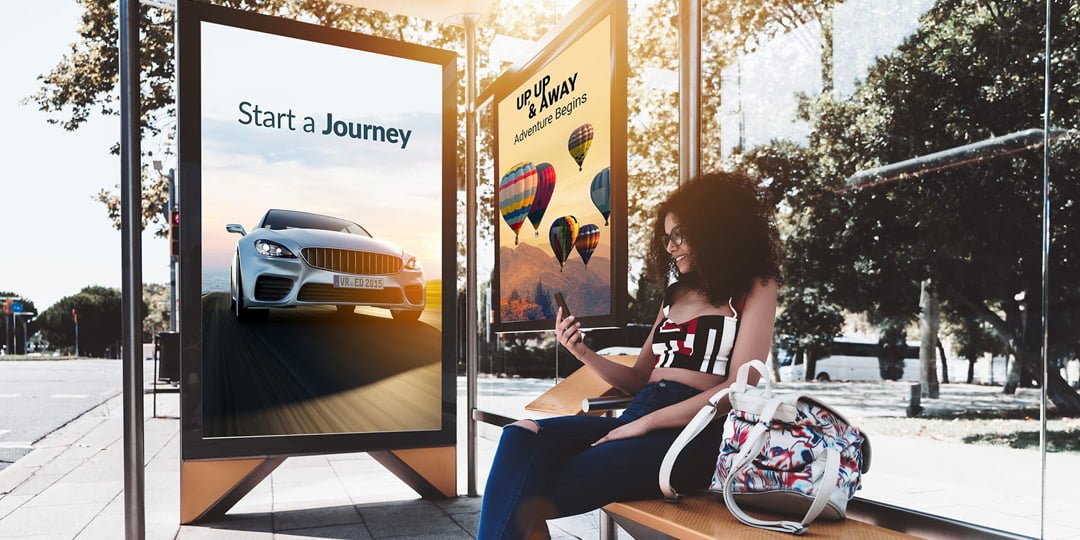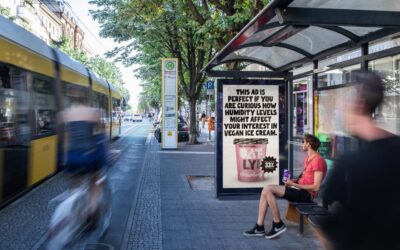Like other digital levers, the Digital Out-Of-Home (DOOH) market has not escaped the trend of automation and the development of its programmatic marketing.
For media agencies and advertisers, the advantages are numerous: greater flexibility in activation, strategic targeting of audiences, almost limitless creativity… a non-exhaustive list that mainly explains the recent interest for this buying model. Indeed, programmatic investments in the DOOH segment are exploding. According to the latest eMarketer report, in Germany, this buying method will represent 50% of all digital out-of-home purchases within two years. In the UK, it is estimated that the programmatic DOOH market will already be close to £80M by next year. Finally, in the US, these investments are expected to double this year compared to 2020.
In this dynamic context, the mobile brings new essential elements, enabling the foundations of an effective omnichannel activation to be laid, while at the same time indexing a measure of impact that was previously under-exploited.
Quantify its reach on target more easily
Historically based on traditional metrics, such as the number of ad impressions delivered, the mobile device allows Digital Out-Of-Home to push its boundaries and renew its value proposition.
Indeed, thanks to new technologies and geolocation data, it is now possible to estimate the number of users who have been exposed to a digital billboard, whether it is in an indoor or outdoor environment.
To accomplish this, it is necessary to combine the precise locations of the various panels activated as part of a communication campaign with a technology for capturing the users mobile advertising identifiers.
Ultimately, this method makes it possible to estimate the volume of audiences addressed, in a 100% anonymized manner, and thus to measure the contribution of DOOH activation to the total coverage of a campaign.
Optimize the orchestration of its omnichannel and cross-device communication
Identifying exposed audiences is the very first step in the omnichannel extension of a digital out-of-home campaign. In this case, it is a matter of obtaining a 360° vision of this audience pool in order to be able to associate each user with the different devices they own (computer, smartphone, tablet, connected TV, etc.).
Once you have this cross-device vision, it is now possible to consider complementary omnichannel activations, with two main benefits.
Firstly, the control of advertising repetition in cross-device.
Indeed, once all the devices are reconciled, it becomes much easier to control advertising exposure and the repetition rate per user. This process allows you to extend your coverage on target and thus succeed in addressing a larger affinity audience.
Also, cross-device reconciliation is the gateway to the implementation of a true advertising scenario. Thus, advertisers can address their core target audiences across the entire customer journey, strategically activating the most impactful media according to campaign objectives or the consumer’s mobility path.
Effectively measure your advertising impact
The collection of advertising identifiers also plays an important role at the end of the campaign, particularly in the context of effectiveness measurement. Indeed, identifying the exposed audiences allows to set up new generation protocols, based on the administration of digital questionnaires, allowing to survey these same individuals and thus to get advertising effectiveness indicators. These indicators, after activation, can help answer several questions, such as the impact on brand awareness, brand consideration and consumer purchase intention.
In addition, and in order to get as close as possible to the last stage of the customer journey, data of the exposed group, when available over a long enough period of time, it can also be used to measure audience visits directly at the point of sale. The process, similar to that of the questionnaires, compares a sample of exposed profiles with a sample of profiles not exposed to the campaign (taking care to structure the two groups of audiences according to the same socio-demographic characteristics). At the end of the operation, a positive or negative uplift rate emerges, allowing for a precise assessment of the Drive-to-Store performance of DOOH activations.
The mobile, thanks in particular to the various geolocation data available, makes it possible to boost Digital Out-of-Home activations and open up new opportunities for advertisers, while providing efficiency measurements that have become indispensable.



